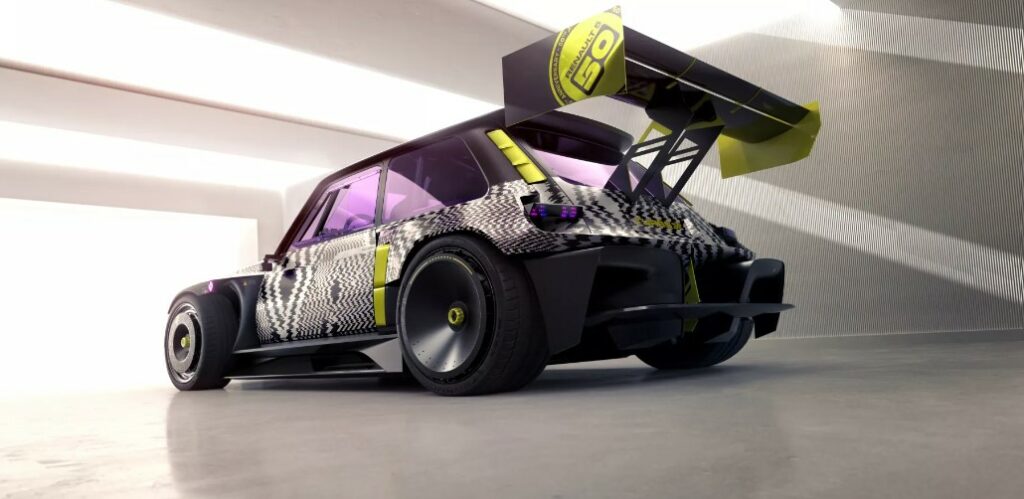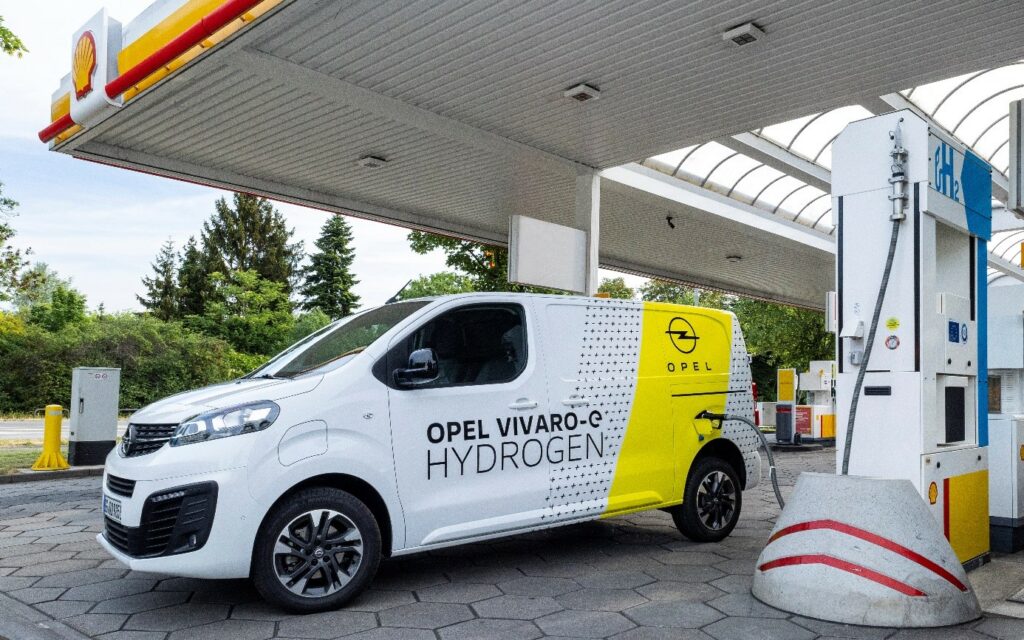How important are concept cars in today’s automotive industry?
02 October 2022

Concept cars have been an automotive industry staple for decades, but what role do they play in today’s automotive world?
From the bold and beautiful to the outrageous and downright weird, concept cars are designed to catch the eye and are, more often than not, bold, futuristic and aesthetically pleasing.
They will never see automotive production or a showroom, but concept cars have been an important element in carmakers’ strategies for decades, and manufacturers spend considerable amounts developing them.
In an environment of intense commercial competition and tight profit margins, the concept car is a way for carmakers to gauge public response towards new designs, as well as creating media buzz and favourable PR.
‘Concept cars are still important to manufacturers as they allow them to look at new designs and also, in many cases, new manufacturing processes,’ stated Andy Cutler, UK car editor – forecast values at Glass’s.

‘Manufacturers will also use concept cars to showcase future design paths and then they will judge the feedback from the public, allowing them to make more-informed decisions with regards to design changes. Much of this early design is now done with AI but when it comes to showcasing the future to the masses, there is nothing like having a good concept car at a show,’ added Cutler.
Volvo’s 1979 Tundra concept, designed by Bertone, never saw production with the Swedish brand, but did find favour with Citroën. The French manufacturer used the design concept as the basis of the popular, multi-million-selling Citroën BX.
Some memorably audacious concepts have included the Peugeot Onyx, the Ferrari 512 S Modulo, and the Ford GT90, all of which never entered production. Despite this, many concept models possess elements and design features that make their way onto production models.
Talking to the BBC back in 2018, the then DS design director Thierry Metroz described the concept car as a ‘development accelerator.’ With the automotive industry moving away from standard internal combustion engine-powered vehicles and towards electric, hydrogen and autonomy, many manufacturers are embracing the spirit of the concept car to showcase future plans.
From concept to reality
Swedish electric-vehicle manufacturer Polestar has illustrated how a concept can capture the public’s imagination. The company’s Polestar 6 concept received a hugely positive response and effectively forced Polestar to commence a production run.
The Polestar 6 LA Concept has therefore been made available initially as a 500-unit production run, and the 155mph, $200,000 (€208,000) electric roadsters sold out within minutes. This is proof that concept cars can find their way on to the road, but customers will have to wait until 2026 to get behind the wheel of this particular model.
Whilst Polestar’s roadster might be an unrealistic prospect for most budgets and automotive aspirations, there are examples where concept models have closely resembled the vehicle which ends up on the road.
Sam Livingstone, director at Car Design Research, highlighted that concept cars can be a way of ‘warming up the marketplace’ and underlines that sometimes the concept can find its way into mainstream production runs.
‘Perhaps you can almost go back to the Mercedes Benz SLK, the Porsche Boxster, and even the Audi TT,’ affirmed Livingstone. ‘Those three cars came from the core, leading German brands that everybody looks to in all sorts of respects, not least design. In the mid-to-late 1990s, these manufacturers very much set that template to announce a concept design, which they followed closely up in a production form.
‘The Audi TT announced itself to such a breath of fresh air, which somehow was read and consumed initially as a concept car, and yet was fairly faithfully then translated across into the production design. The TT shows design can push something quite hard and strong and extreme, whilst keeping an eye on production feasibility, and, as a consequence of having had such a response from the market in the media, it was able to help leverage the production side,’ said Livingstone.
Today’s manufacturers embrace the spirit

Czech carmaker Skoda recently unveiled its Vision 75 concept. At the heart of this is the planned release of three new all-electric models on the market as early as 2026, with more to follow. Skoda is using this concept as a way to tease a new design language, new logo, and corporate identity update.
The Volkswagen (VW) Group plans to use the Vision 75 at a specific preview of one of these models, with the all‑electric share of the company’s European vehicle sales set to rise to over 70% by 2030. To support this, the Czech carmaker will be investing a further €5.6 billion in e-mobility and €700 million in digitalisation over the next five years.
A slightly more blatant embracing of the concept-car spirit can be found in Skoda’s Vision GT. This computer-animated model is inspired by Skoda’s 1957 11000 OHC sportscar and is on show in the Design and Transformation exhibition in Brussels.
Skoda states that the Vision GT concept is designed to send a ‘clear signal for sustainable sportiness and emotion in the digital age’, drawing on the past and future of the marque to highlight a potential direction of the company.

Renault has a strong tradition of developing concept cars, which often closely echo real-world production runs. One of the most notable Renault concepts is the DeZir, an electric two-seat coupé, designed by Laurens van den Acker, which debuted at the 2010 Paris Motor Show.
‘The DeZir was a stake in the ground from the then new design director in a potentially precarious situation,’ stated Livingstone. ‘As a newbie within a quite old organisation, which was sort of encountering quite a lot of turbulence and financial difficulties, van den Acker very much put a stake in the ground to make a statement and do so in a positive manner.
‘This was not just to titillate and excite people connected to production design, but also as a statement of intent from an individual and a design group within a wider company to lay out their intentions and their direction, not just for an external audience and potential buyers, but also internally at Renault.’
Recently, the French manufacturer combined past with present via its all-electric Renault 5 prototype. The original Renault 5 was launched in 1972 and by 1980 it was one of the best-selling cars in the world. Using the same full-electric technology as the Zoe, the production version of the Renault 5 Prototype is being teased alongside a new show car that is a contemporary tribute to the Renault 5.

Inspired by the world of video games, the R5 Turbo 3E drift car is part of a multimedia concept showcasing Renault’s ‘all-electric future’, featuring collaborations with fashion designers and retro videogame aesthetics.
‘R5 Turbo 3E combines ultra-tech design and wilful exuberance with numerous references to the world of car racing and video games. This combination propels the show car into modernity and technology, and it is at the frontier between the real and virtual realms. This pure electric ‘drifter’ demonstrates that electric cars can also be fun with incredible performance,’ underlines Renault design director, Gilles Vidal.
Relevance in a virtual world
As well as mashing together history and future, Renault is embracing concepts in the virtual world, something that is prevalent across the automotive landscape.
A ‘digital double’ of the R5 Turbo 3E will spring to life in the universe of virtual games in Web3, the decentralised internet where online platforms and services use a model based on blockchain. A collection of Non-Fungible Tokens (NFTs) will be available around the vehicle and people who own these digital assets will be offered exclusive advantages and rewards.
Today, there is no need to visit a physical space to see concept cars and cutting-edge automotive handiwork. As with many things, COVID-19 necessitated the move of physical events to an online platform, motor shows included. Events such as the CES can be enjoyed virtually, and carmakers such as Hyundai, Audi, and Lucid have embraced online platforms to showcase new concepts and technology.
With an increasing possibility to see future automotive concepts from the comfort of one’s screen, is there still a place for a physical concept car?
‘Let’s face it, the concept car is only experienced physically by very few people, and that is certainly the case with the interior of the vehicle, which has become so much more important for consumers,’ offers Livingstone. ‘The fact that traditional show cars can be sat in only by a few dozen media people suggests that it is actually a very poor mechanism to promote new concepts.
‘With the metaverse and other digital mediums via which people can consume concept cars, animation and so on allows consumers to connect with them virtually. There are all sorts of opportunities, which I do not think are really being fully tapped into yet, to be able to fundamentally take the show car into a new space and achieve what concept cars set out to do in terms of having a brand-specific statement that is exciting and appealing for a new future to customers.’



